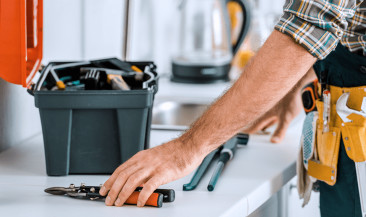
JWC Rentals Property, located in Killeen Texas, is a company that specializes exclusively in residential real property. They rent to single family homes. Their properties have generated over a million dollars in revenues over the past six years. This is a strong performance for a small local operation. The JWC team comprises eight employees, all of whom work out of a single location.
JWC does not offer many services but it does offer some notable perks. First, tenants can bring their pets to certain properties. The list includes ferrets, cats, dogs, and ferrets. However, aggressive breeds will usually be excluded. There is an online portal that allows you to pay your rent. However, this may take a couple of days to reflect on your bank account, and it's important to note that this service is not free.

A shuttle bus can be used to travel around town. In-house locksmiths are available to help you if your lock is broken. They also have an online portal which can be accessed via a smart phone.
Unlike some property management companies, JWC does not require a credit card to process an application. JWC requires applicants to complete an application form and provide their banking details. Alternatively, they can use a check or money order. If your bank doesn’t offer prepaid cards, however, the money will be paid in cash. Finally, you will receive a notice to renew your lease thirty-five to forty-five business days before it expires.
The name JWC comes from Jim Wright, the owner. He is a veteran of the Army, having served 15 years with the military. After his military service, he entered real estate. His company has been operating since 1974. This venerable company manages hundreds of residential and business properties and serves over 2,000 clients annually. Apart from rentals, they also specialize in property management, inspections, and sales.

Rarely do you find a company which combines all these aspects into one seamless operation. They are available Monday through Sunday. To make it more convenient for tenants, they have an online portal with secure online rental payments. This is the real sign of a trusted real estate company. Because they have been in business for many years, they are well-versed in their field. Your local JWC will see positive changes thanks to their customer service focus, and the dedication of their team to being the best in what they do. JWC has the solutions for you, whether you are looking to buy a home or rent a place. Their impeccable customer service record makes it easy to see why JWC properties are leased quicker than any other company.
FAQ
How often should I call a handyman?
It depends on the nature and scope of your project. You might only need one handyman per work week if your job is a simple fix-it, such as changing a light bulb. For large-scale remodeling projects, you might need to hire several handymen.
How do I locate a trustworthy handyman
Before hiring a handyman you should always verify their references. Ask friends and family who have used the handyman in the past. Check out the internet for reviews. Handymen can post reviews on a variety of sites.
Do I have to train a handyman?
No. Handymen already possess the knowledge and skills to complete any project. All you need to do is give them the materials to complete the job.
Statistics
- Our handyman services for seniors are provided by professional senior helpers who have been serving the community for over 20 years with 98% customer satisfaction. (cantatahomeservices.org)
- Another estimate was that the market in the United States was $126 billion and was increasing by about 4% annually. (en.wikipedia.org)
- With a strong housing market, the handyman and general maintenance worker industry are expected to grow by nearly 10% in the next decade. (housecallpro.com)
- “Before the pandemic, 40% of people asked how we could estimate a job when we weren't there,” Rose recalled. (inquirer.com)
- A franchise was approximately $110,000 with a franchise fee of $14,900, according to a spokesperson for a national handyman franchise. (en.wikipedia.org)
External Links
How To
How to Replacing a Broken Tile
Step 1: Take away the old tiles.
Take out the tiles and place them on a new flooring surface. These tiles should be kept intact in case you need them again. You can note the parts that are missing or damaged so that you can find replacements.
Step 2: Choose New Tiles
Take a look at some different options available for tile replacement.
-
Locate a replacement tile that is the same as the one you just removed.
-
To find the right piece, take the measurements you took as you were removing the tiles. This will allow you to quickly find the right size, without having to measure again.
-
You should look for different colors, patterns and textures.
-
Consider which grout you would like to use, if any. Some prefer a solid color, while others like mixing it up.
-
Choose a tile that resists moisture.
-
The final thing to consider is the location of the tile. It will save you time and money if you make sure there's enough space for the proper installation.
-
Once you've found the tile that suits your needs, you can place your order online.
Step 3: Install the tiles.
Use the same method as before to install your new tiles. It is important to align them correctly so they fit together properly.
Step 4 - Clean up
Before putting down the final layer of protective material, clean up all the debris from the floor.
This will keep dust and dirt from getting into the grout between tiles, which could lead to mold.
Step 5: Sand down the Floor
After cleaning, sand the floors to remove any particles.
Step 6 - Finish Off
Once the floor has been completely smoothed, apply the protective coatings on the tiles. You should wait until this stage as wet paint can stain new tiles.
To protect your floors from stains, you can use "damp-and dry" products.
However, it won't cover every possible problem that may occur after you've installed your new tiles. For example, if you have a lot of kids running around, you may want to consider using an anti-slip coating on top of the protective layer.
Finally, do not forget to keep the protective sealer on for several more weeks before you move back into your home.